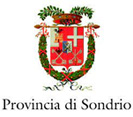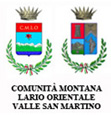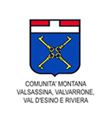Trail of Sentiero del Viandante
Sentiero del Viandante (Wayfarer’s Path) does not retrace an ancient route but is the result of the union of several paths that in the past linked the towns on the eastern side of the lake and that were part of a larger system of routes connecting Milan to the Alpine passes.
The original route began at the small church of San Martino in the municipality of Abbadia Lariana, but recently the Lecco – Abbadia section was restored and inaugurated, starting at Le Caviate in Lecco. The new route continues on the slopes of San Martino Mount to the new metal staircase that allows you to cross SS 36 and the railway to reach Abbadia Lariana, a town known for its Civic Museum called Setificio Monti. Initially the hike takes place through meadows and olive groves with views of the Grignetta and continues toward Mandello del Lario, where historic and religious buildings such as the Church of San Giorgio and the Tower of Maggiana (known as the “Barbarossa“) are encountered.
Passing through the hamlets of Rongio and Somana, it continues above the village of Olcio, which can be admired only from above. The mule track finally reaches Lierna, a lakeside village known for the Riva Bianca castle. Here, the route of the high variant takes altitude and climbs toward Val d’Esino, reaching Esino Lario, a municipality immersed in the Grigne Regional Park, passing through the village of Ortanella. This challenging section is flanked by a less strenuous variant, the low route, which runs along the lake and passes by Fiumelatte, a stream known for the shortness of its course. This route allows also a stop in Varenna to visit its famous Villa Monastero. Once you reach the promontory of Vezio, dominated by the ancient military outpost now known as Vezio Castle, you cross the municipality of Perledo with its characteristic hamlets: Regolo, Gittana, and Cestaglia and gradually descend in the direction of Bellano. After passing the little chapel of Madonna Addolorata in the locality of Rivalba, you continue until you cross the Roman bridge over the Orrido di Bellano, a natural gorge carved by the waters of the Pioverna stream, and reach under the portico of the church of Santi Rocco e Sebastiano. The path gains altitude again thanks to a steep mule track that reaches the Sanctuary of the Madonna delle Lacrime di Lezzeno. After the hamlets of Pendaglio and Oro, the mule track crosses the bridge over the Val Grande to reach Dervio. After being arrived at the ancient church of San Quirico with its Romanesque-style bell tower, continue to the Lavine spring and then take a steep mule track to Castello with the medieval tower of Orezia and the small church of San Leonardo. The Trail then continues to Corenno Plinio, a medieval village known for its majestic castle and the church of St. Thomas of Canterbury.































